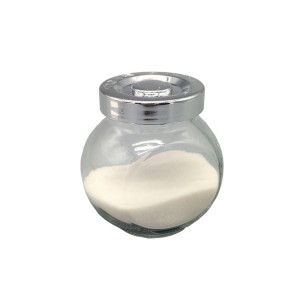What are the uses of zirconium tetrachloride?
Zirconium tetrachloride (ZrCl4) has various applications, including:
Preparation of Zirconia: Zirconia tetrachloride can be used to prepare zirconia (ZrO2), which is an important structural and functional material with excellent physical and chemical properties such as high temperature resistance, wear resistance, and corrosion resistance. Zirconia is widely used in high-tech fields such as refractory materials, ceramic pigments, electronic ceramics, functional ceramics, and structural ceramics
Preparation of sponge zirconium: Sponge zirconium is a porous metallic zirconium with high hardness, high melting point, and superior corrosion resistance, which can be applied in high-tech industries such as nuclear energy, military, aerospace, etc
Organic synthesis catalyst: Zirconium tetrachloride, as a strong Lewis acid, can be used as a catalyst for organic synthesis such as petroleum cracking, alkane isomerization, and butadiene preparation
Textile processing agent: Zirconium tetrachloride can be used as a fireproof and waterproof agent for textiles to improve their protective performance
Pigments and tanning: Zirconium tetrachloride is also used in the manufacturing of pigments and the tanning process of leather
Analytical reagent: In the laboratory, zirconium tetrachloride can be used as an analytical reagent
Raw materials for other zirconium compounds: Zirconium tetrachloride can also be used to produce other zirconium metal compounds, as well as to produce catalysts, waterproofing agents, tanning agents, analytical reagents, and other products, which are applied in fields such as electronics, metallurgy, chemical engineering, textiles, leather, etc

What are the characteristics of zirconium tetrachloride as a catalyst?
Zirconium tetrachloride as a catalyst has the following characteristics:
Strong acidity: Zirconium tetrachloride is a strong Lewis acid, which makes it excellent in many reactions that require strong acid catalysis, especially in organic synthesis reactions
Improving reaction efficiency and selectivity: In oligomerization, alkylation, and cyclization reactions, zirconium tetrachloride can significantly enhance reaction efficiency and product selectivity
Widely used: Zirconium tetrachloride is widely used as a catalyst in organic synthesis reactions, including accelerated amination, Michael addition, and oxidation reactions
Relatively inexpensive, low toxicity, and stable: Zirconium tetrachloride is considered a relatively inexpensive, low toxicity, stable, green, and efficient catalyst
Easy to handle and store: Although zirconium tetrachloride is prone to deliquescence, it can be safely stored under appropriate conditions (in a dry, sealed container)
Easy to hydrolyze: Zirconium tetrachloride is prone to moisture absorption and hygroscopicity, and can hydrolyze into hydrogen chloride and zirconium oxychloride in humid air or aqueous solutions. This should be particularly noted when used as a catalyst
Sublimation characteristics: Zirconium tetrachloride sublimates at 331 ℃, which can be used in its purification process by re sublimating in a hydrogen stream to remove impurities
In summary, zirconium tetrachloride is widely used as a catalyst in organic synthesis due to its strong acidity, improved reaction efficiency and selectivity, wide range of applications, and relatively low cost and toxicity. Meanwhile, its easy hydrolysis and sublimation characteristics also need to be taken into account during the operation process.
Post time: Dec-13-2024